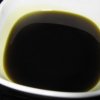Raspberry I have known many Indian woman in college and most of them had long ,thick lush hair. Now I wonder if the secret was pre-poo treatments with coconut oil or other oils for that matter. I wish I could find newer studies on avocado oil. The scientist have done other studies on other oils.
J Cosmet Sci. 2003 Mar-Apr;54(2):175-92
Effect of mineral oil, sunflower oil, and coconut oil on prevention of hair damage.
Rele AS, Mohile RB.
Research and Development Department, Nature Care Division, Marico Industries Ltd., Mumbai, India.
Previously published results showed that both in vitro and in vivo coconut oil (CNO) treatments prevented combing damage of various hair types. Using the same methodology, an attempt was made to study the properties of mineral oil and sunflower oil on hair. Mineral oil (MO) was selected because it is extensively used in hair oil formulations in India, because it is non-greasy in nature, and because it is cheaper than vegetable oils like coconut and sunflower oils. The study was extended to sunflower oil (SFO) because it is the second most utilized base oil in the hair oil industry on account of its non-freezing property and its odorlessness at ambient temperature. As the aim was to cover different treatments, and the effect of these treatments on various hair types using the above oils, the number of experiments to be conducted was a very high number and a technique termed as the Taguchi Design of Experimentation was used. The findings clearly indicate the strong impact that coconut oil application has to hair as compared to application of both sunflower and mineral oils. Among three oils, coconut oil was the only oil found to reduce the protein loss remarkably for both undamaged and damaged hair when used as a pre-wash and post-wash grooming product. Both sunflower and mineral oils do not help at all in reducing the protein loss from hair. This difference in results could arise from the composition of each of these oils. Coconut oil, being a triglyceride of lauric acid (principal fatty acid), has a high affinity for hair proteins and, because of its low molecular weight and straight linear chain, is able to penetrate inside the hair shaft. Mineral oil, being a hydrocarbon, has no affinity for proteins and therefore is not able to penetrate and yield better results. In the case of sunflower oil, although it is a triglyceride of linoleic acid, because of its bulky structure due to the presence of double bonds, it does not penetrate the fiber, consequently resulting in no favorable impact on protein loss.
J Cosmet Sci. 2001 May-Jun;52(3):169-84
Secondary ion mass spectrometric investigation of penetration of coconut and mineral oils into human hair fibers: relevance to hair damage.
Ruetsch SB, Kamath YK, Rele AS, Mohile RB.
TRI/Princeton, Princeton, NJ 08540, USA.
An attempt has been made to show the difference in the penetrability of coconut oil and mineral oil in human hair. We have used secondary ion mass spectrometry (SIMS) in combination with a time-of-flight (TOF) mass spectrometer. Characteristic ions formed by the pure components when bombarded with gallium ions have been identified with their m/z values. The distribution of the ion, characteristic of the particular treatment, has been established in the cross sections of hair treated with coconut and mineral oils. The results show that coconut oil penetrates the hair shaft while mineral oil does not.The difference may be due to the polarity of the coconut oil compared to the nonpolar nature of the mineral oil. The affinity of the penetrant to the protein seems to be the cause for this difference in their behavior. This study also indicates that the swelling of hair is limited by the presence oil. Since the process of swelling and deswelling of hair is one of the causes of hair damage by hygral fatigue, coconut oil, which is a better penetrant than mineral oil, may provide better protection from damage by hygral fatigue
J Cosmet Sci. 2005 Sep-Oct;56(5):283-95
Investigation of penetration abilities of various oils into human hair fibers.
Keis K, Persaud D, Kamath YK, Rele AS.
TRI Princeton, Princeton, NJ 08542, USA.
In this work we have explored capillary adhesion between hair fibers treated with different types of oils. With coconut, olive, and sunflower oils the capillary adhesion was found to decrease with time, but not with mineral oil. Application of heat reduced the capillary adhesion further for coconut and sunflower oils. Again, this was not observed with mineral oil. Based on an earlier study, where coconut oil was found to penetrate hair while mineral oil was unable to do so, it was hypothesized that the reduction in capillary adhesion resulted from the penetration of oil into the fiber, leaving a thinner oil film on the surface. Such a reduction in capillary adhesion can be explained by changes in Laplace pressure and in the areas of liquid bridges formed between the fibers. The thinning of oil films on the surface of hair has been confirmed independently by goniophotometric measurements on single hair fibers treated with coconut, sunflower, and mineral oils. Thick films of oil (thicker than approximately 0.5 microm) are known to mask the scale structure. As the oil is absorbed into the hair, the film thins with time and application of heat, and the scale structure reappears. This change can be conveniently determined by measuring the scale angle, using the well established goniophotometric protocol. The agreement between the two methods supports the concept that the reduction in capillary adhesion between hair fibers is most likely due to thinning of oil films by absorption of oil into the hair.


 .
.
